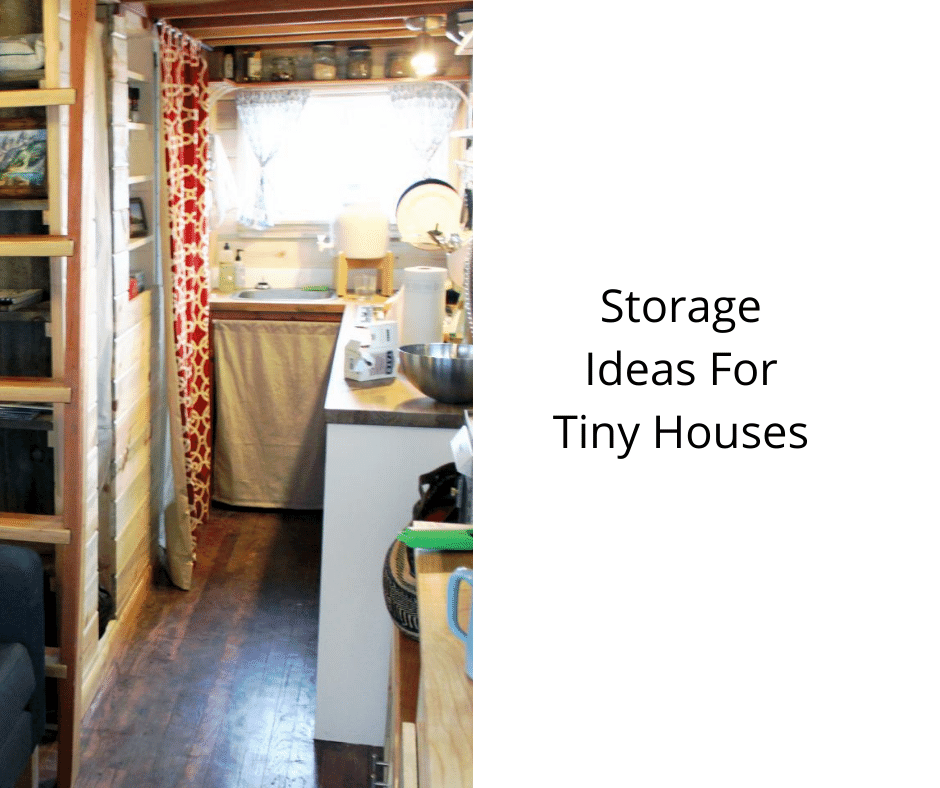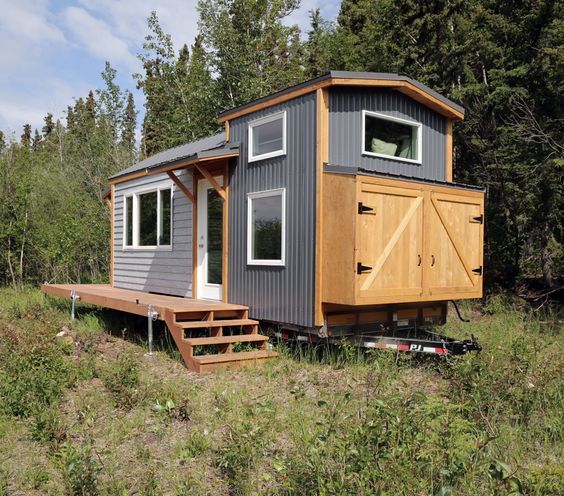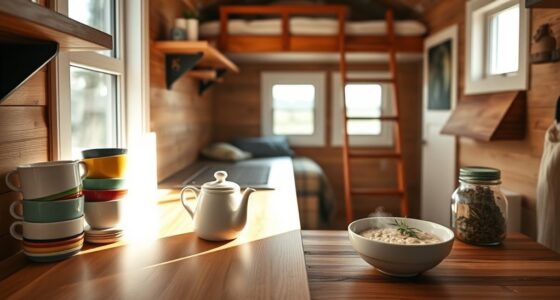There are plenty of ways to increase storage capacity in your small home. One option is to install pull-out drawers under the sofa instead of having shelves in the living room. Another idea is to include floor storage compartments during the construction phase, which can be placed in various locations throughout the house. Converting a staircase into a storage area is also a great alternative. If your home is too small for a designated storage room, adding storage within the staircase can be a practical solution.
Vertical dressers
Keeping everything organized is a huge challenge in a tiny house. Luckily, the minimalist movement and millennials are choosing to live a simpler lifestyle, and there are tons of cool storage options available on Amazon. Investing in good storage will save you time and space. Here are some tips to help you find the best storage options for your tiny home. Keep in mind that you might have to sacrifice some style for storage space.
A vertical dresser is a great option for a tiny home. This four-drawer chest is a smart storage solution for your tiny house. It will keep your clothes organized and store valuable items. Not only does it save floor space, but it is also sturdy, so it’s easy to move. In addition to its great storage capacity, vertical dressers are also portable, so you won’t have to worry about storing items in the tiny house.
Another option is a retractable bed. These beds can be easily lowered or raised remotely, allowing you to use space underneath when the bed isn’t in use. This saves space, and you can also use the space for other purposes. Unlike a regular bed, this type of bed is easier to access during the day and can even double as a desk when needed. The retractable design allows you to make the most of your space and keep your room looking stylish at the same time.
Another option for storage is shelving. If you have a lot of extra space in your house, adding shelving is a great way to add storage space. These shelves can be purchased from the store or bought secondhand. If you’re on a budget, you can build your own using scrap wood or salvaged cabinets. If you don’t want to spend too much money, you can also use skateboards, pallets, and other scrap materials.
For an extra modern look, consider adding a pair of side tables. These tables feature sturdy mesh shelves and are easy to assemble. They look great next to your sofa or bed, and you can store extra stuff under them. It is a great way to add storage space and style to a tiny house without breaking the bank. It will make any tiny home look stylish and functional. It will add character to any room.
Open shelving
Open shelving is a godsend for tiny houses. It helps make rooms feel lighter and airy and makes storage space accessible. Open shelving can create an open space under the stairs and make use of space that would otherwise go to waste. It is convenient if you don’t have closet space, as it will allow you to use the area under the stairs for storage. Whether moving in with your spouse or alone, open shelving will make the room much more spacious.
There are several types of open shelving you can install. For example, a straightforward hanging shoe organizer is a versatile storage option. You can use it to store everything from your shoes to your jewelry. Another great option is a cargo net pocket, which fits inside the cabinet doors. These are very useful because they protect your items when moving from one place to another. These options are easy to install and provide plenty of storage space for your belongings.
Another flexible option is a basket. Baskets come in many sizes and can be kept open for easy access or closed when not in use. Baskets are also a great solution if you don’t have enough space for cabinets in your tiny house. They can also be used for hiding electronics. Plastic storage bins can also be used as baskets. These versatile storage options can be easily fitted into small spaces between pieces of furniture or can be a larger accent piece.
Open shelving is another great option for a tiny house. The only problem with regular shelving is that it is difficult to modify. You’ll need to remove the shelves already attached to the walls. If you’re using these shelves only occasionally, they’ll likely not be helpful. Fortunately, there are some great options for adding overhead shelving to your tiny house. You can even use leftover wood pallets as storage space.
Storage Under the Stairs
Storage under the stairs in tiny houses is a great space for many uses. Most traditional homeowners fail to recognize that stairs under a tiny house can also function as a closet, bookcase, or kitchen pantry. They can be used to store books, coats, shoes, and more. There are many other storage ideas you can incorporate into your tiny house. These ideas will help you maximize the use of storage under the stairs in your tiny house.
The Tiny House of Zen uses a clever staircase for storage. You can view a video of this house on Tiny House Listing’s YouTube channel. There’s even a table that rolls out of the wall underneath the stairs. The tiny house also includes storage under the stairs for two chairs. It’s a practical and stylish way to maximize space. Just remember to be practical when planning your tiny house staircase.
Other storage solutions for tiny houses include locking cupboards, which can be a safe place to store things. Lockable cupboards can be a good way to hide away a gun or lockbox. You can cover these with removable carpeting to make them more invisible. Keeping items out of sight will make them less likely to be misplaced. Storage under the stairs in tiny houses will maximize space. Storage is an important consideration when building a tiny house, and a little creativity can go a long way in making your home more functional and enjoyable.
Stacking box stairs are another storage option for tiny houses. While traditional stairs feature stringers that block the space under them, stacked box stairs make maximum use of the space under the stairs. This allows for more storage space, such as cubby holes, drawers, and cabinets. There’s also an option for bookshelves. These options are perfect for those with limited space. You can also choose a stair with storage underneath it.
If you do not want to climb stairs, consider installing a ladder. Stairs are more convenient, but they have their limitations. You may need to consider headroom and/or dormers when deciding which stairs to install. Additionally, the stairs can add extra weight to your tiny house. In a tiny house, it may be best to combine a ladder with stairs. This is particularly useful if you need extra storage space on one side of the tiny house.
Basket Organizers
Small baskets can serve as decorative storage solutions for tiny houses. These small containers can be hung against a wall to replace a full closet. They are an excellent way to free up cabinet space and eliminate the need for a closet. Hooks against the wall can also replace a full closet. In addition, they are an excellent storage solution for the kitchen and bathroom, as they can replace cabinets or furniture.
These containers can be woven to hold everything from books and magazines to towels. They can also be used to hold throw blankets and other small items. Tiny houses can benefit from hanging storage containers. They are easy to access and free up floor space so that they can be placed under a console table or on shelves. And they can be used to keep a tiny house free of clutter. A storage basket can also store small household items such as blankets or pillows.
Using jars to store bathroom tools is another great idea. These stylish containers can help you find the right place to store your toothbrushes, razors, and nail clippers. Another great idea for a tiny house is a pull-out spice rack. This type of organizer is perfect for kitchens with small spaces, as it gives you easy access to your cooking essentials. Toe-kick drawers can be fitted between cabinets and the floor to maximize the storage space. And behind-the-door storage is another great way to declutter your tiny house.
A vertical dresser may be just the right solution if you’re looking for a great storage solution for your tiny house. With four drawers, this storage solution keeps clothes sorted while providing adequate space for valuable items. A vertical dresser can serve as a nightstand or side table for your tiny home office and is an excellent storage solution. These small storage units are also portable, so you can take them wherever you go.
In addition to hanging shelves, another innovative way to use baskets is to hang them in a closet. These storage solutions don’t take up floor space, and they’re a fashionable solution for people who want to display their unique style. You can also hang kitchen utensils to free up drawer space. These ideas are only a small portion of all the storage solutions for a tiny house.
Hi, I’m Emma. I’m the Editor in Chief of Tiny House 43, a blog all about tiny houses. While tree houses are often associated with childhood, they can be the perfect adult retreat. They offer a cozy space to relax and unwind, surrounded by nature. And since they’re typically built on stilts or raised platforms, they offer stunning views that traditional homes simply can’t match. If you’re looking for a unique and romantic getaway, a tree house tiny house might just be the perfect option.










